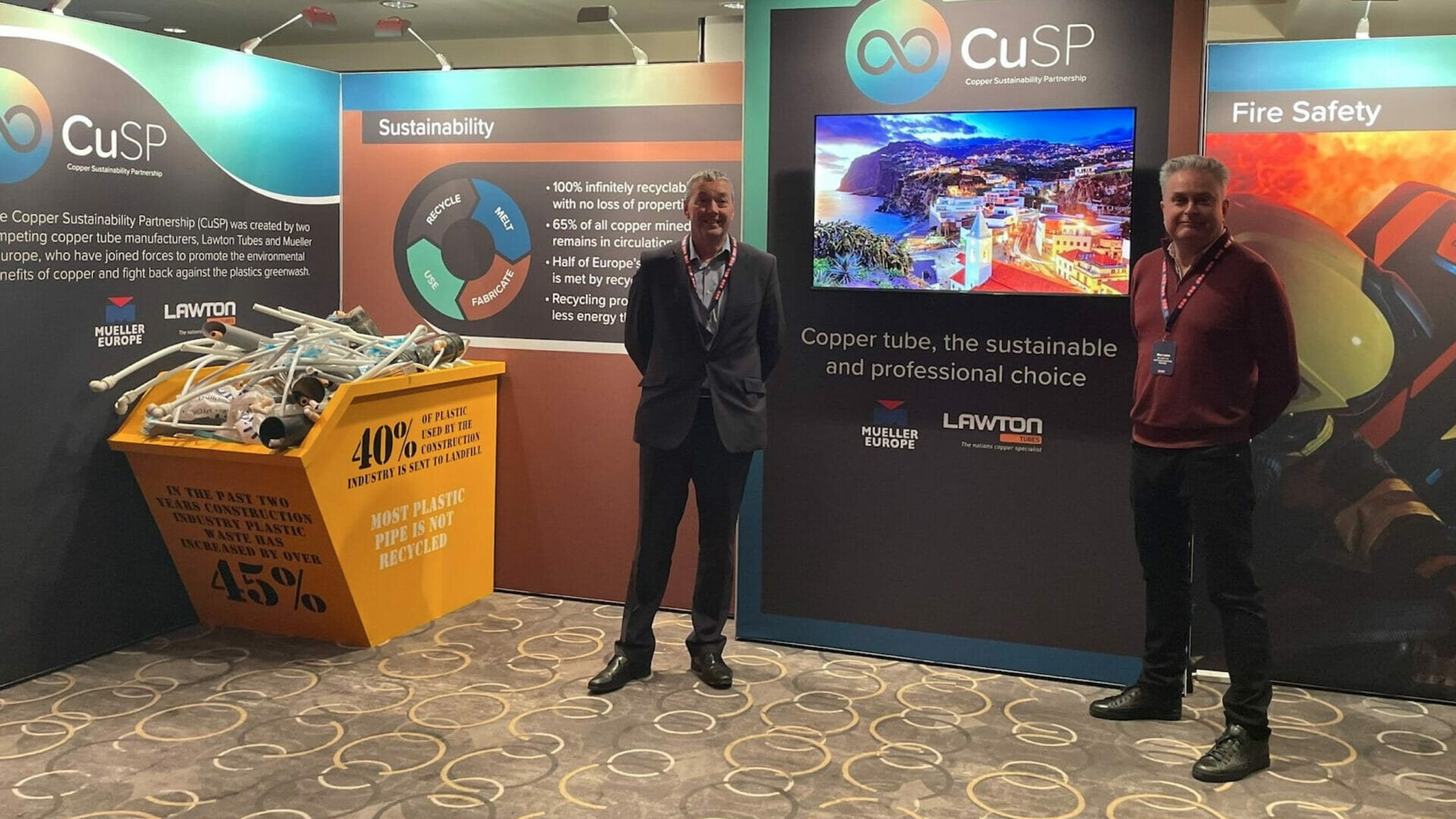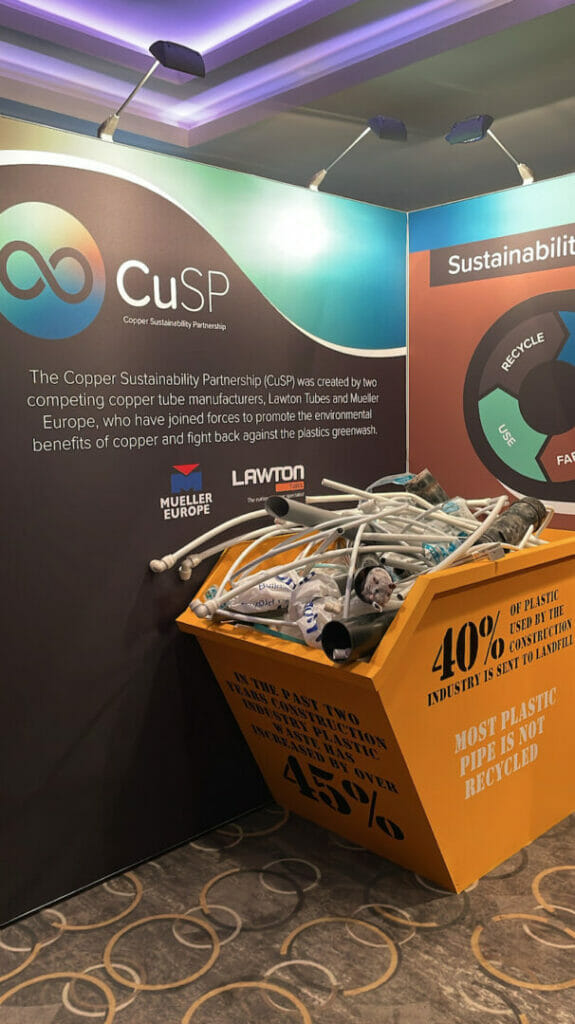
On 25 and 26 January, the BSS Conference took place at Wembley Stadium in London. This year, the theme was ‘Sustainability’ and BSS suppliers had the chance to exhibit and present seminar sessions to BSS staff and customers.
BSS Industrial is a specialist distributor of heating, ventilation, pipeline and mechanical services. It stocks a multitude of products and materials, including copper tube from both founding members of the Copper Sustainability Partnership (CuSP), Lawton Tubes and Mueller Europe.
CuSP attended the conference, taking a stand in the exhibition marketplace as well as presenting a seminar session on the sustainability and safety credentials of copper.
Here, Andrew Surtees, co-founder of CuSP, explores his top takeaways from the event and reflects on the key themes discussed.
Copper sustainability
With copper being a 100% recyclable, sustainable material, the theme of the conference was a perfect fit for CuSP. Unlike plastic and synthetic materials, copper can be reused and recycled infinitely without losing any of its properties – copper used once will be identical to that used 1,000 or even a million times.
According to the US Geological Survey, there are approximately 5.6 billion metric tonnes of copper, which is more than sufficient to surpass both current and future demand. What’s more, the Copper Alliance states that, to date, at least 65% of all copper mined remains in circulation and around half of Europe’s copper demand is currently being met by recycled materials.
Plastic, on the other hand, does not tell the same sustainability story. In the past two years, construction industry plastic waste has increased by over 45%, with 40% of the plastics used by the industry sent to landfill. Despite plastic piping being marketed as recyclable, the reality is that most plastic pipe is not recycled.
This is evidenced by CORDIS research, which states that conventional non-recyclable pipes for heating plumbing systems are manufactured from non-recyclable cross linked PEX. They are also made of PEX/AL which comprises a layer of aluminium sandwiched between two PEX layers.
Recent Copper Alliance research also evidences how copper tubes are the greener choice for cutting greenhouse gas emissions and mitigating climate change. A Life Cycle Assessment was conducted of copper, plastic multilayer pipes (PEX/AL) and plastic cross-linked polyethylene (PEX) and the Global Warming Potential indicator showed that the PEX/AL and PEX systems impacted global warming 18% more than the copper pipe system.
Fire safety considerations
Another key theme that CuSP focused on at the conference was fire safety and how copper offers greater safety in a building fire compared to plastic. Copper is well known for its thermal resilience and has an ability to withstand fluctuating temperatures. As a result, it won’t melt, burn or give off toxic fumes in a building fire.

However, the evidence of the dangers of plastic in building fires is simply shocking. With a combustion point of between 430°F and 900°F, depending on the type of material, plastic will melt in building fires and as it burns, it will release poisonous chemicals into the air. Copper, on the other hand, has a combustion point of 1,981°F, so is a much safer alternative.
A study conducted in 2019 (Releases of Fire-Derived Contaminants from Polymer Pipes Made of Polyvinyl Chloride) found that PVC pipes release carcinogenic toxins such as methylene chloride, allyl chloride and vinyl chloride when burnt. With this in mind, it’s no wonder that cancer rates within the firefighting profession have slowly risen since the 1950’s, coinciding with the time when plastic use in the construction industry and domestic settings started to grow.
We have also recently heard the tragic news that up to a dozen firefighters who tackled the blaze at Grenfell Tower have been diagnosed with terminal cancer. With polyethylene plastic being a main component of the cladding, there is no surprise that this is the case.
Ignoring the problem
One thing that stood out at the conference was the amount of companies who were simply brushing over the sustainability issues of their products by using distraction techniques.
Whether it was focusing on their small range of metal products and including no mention of their plastic range, using games or giveaways (made of plastic!) as a distraction technique or simply not mentioning sustainability on their stand at all, it was interesting to see how some un-sustainable products were being marketed at a sustainability conference.
As the climate emergency worsens, events like this are so important to raise awareness about how the construction industry can improve its sustainability. However, it seems as though companies attending such events need to examine their ‘sustainable’ credentials before deciding to exhibit, to avoid greenwashing and avoidance of the problem.
The time has come for us to properly prioritise sustainability in the industry and copper is the perfect, professional solution.
To find out more about the sustainable credentials of copper and how you can play a part in the sustainability journey, visit www.cuspuk.com.
